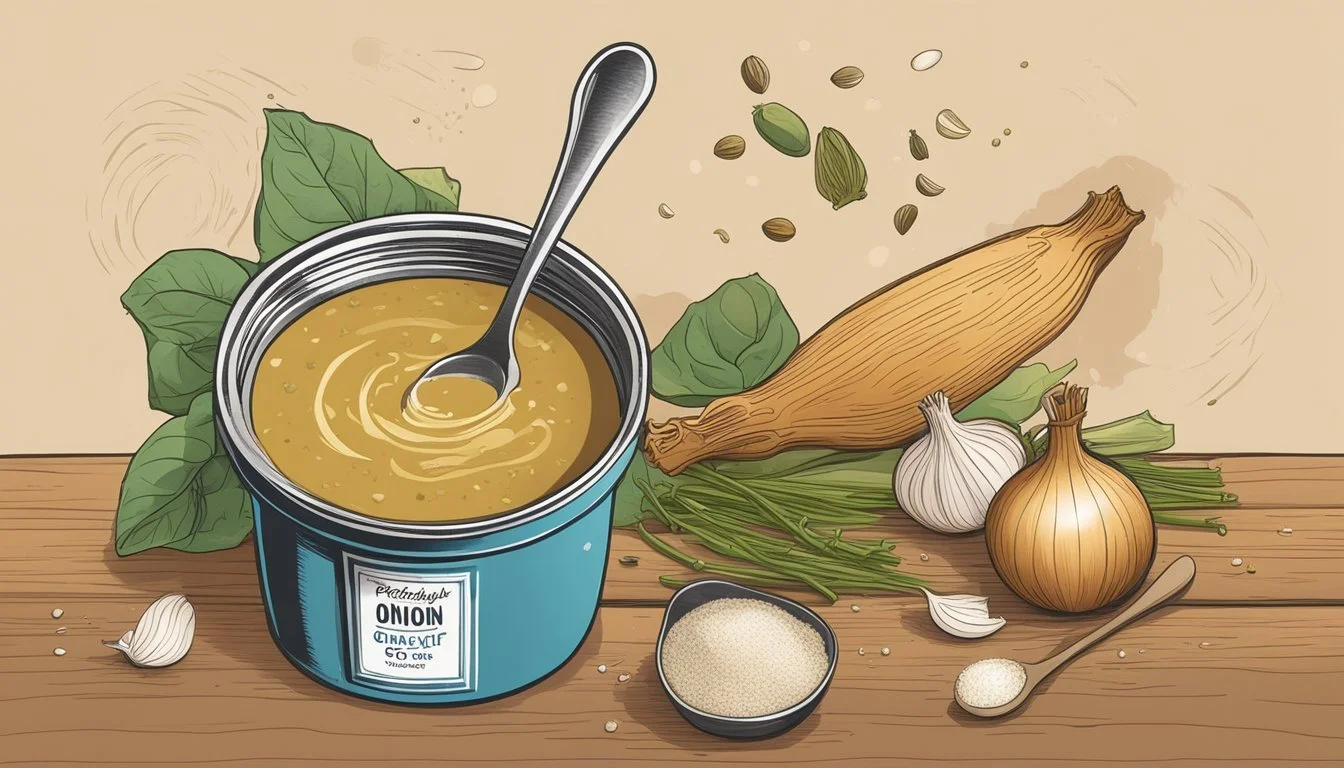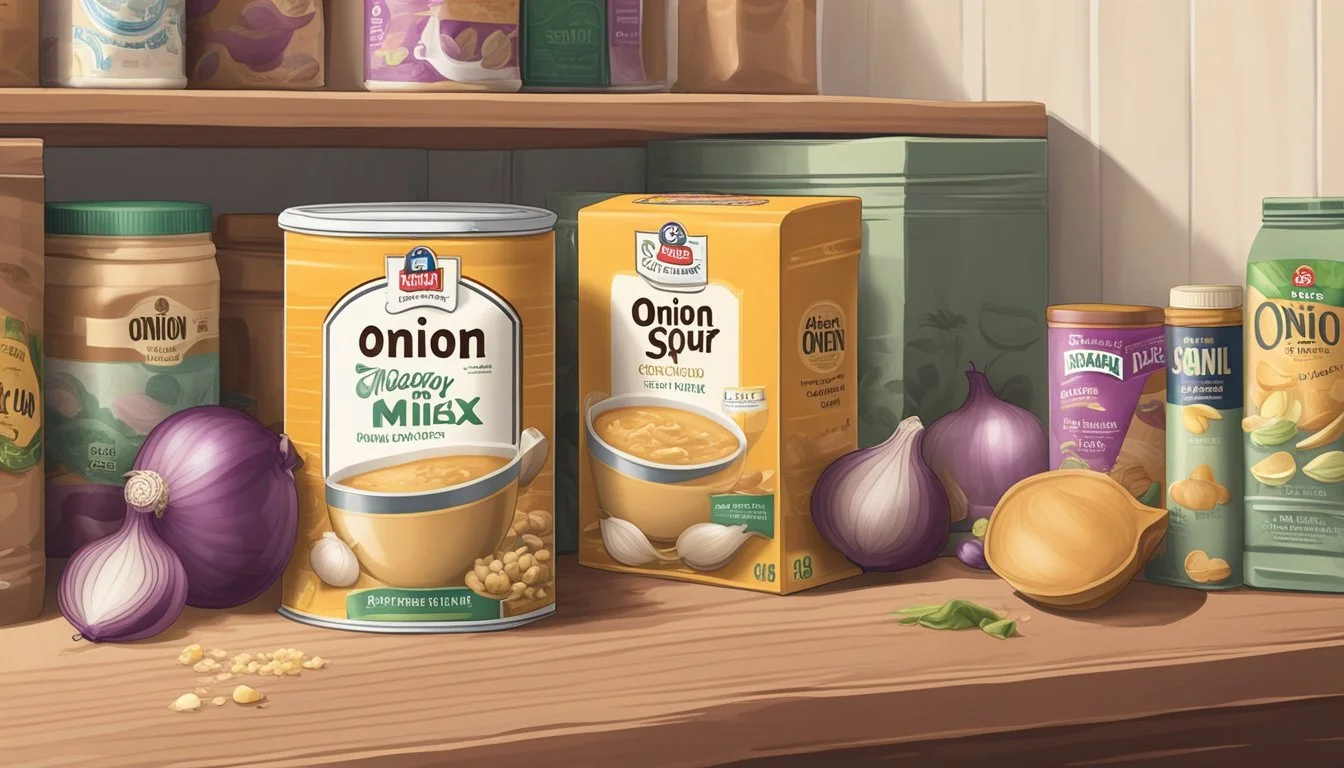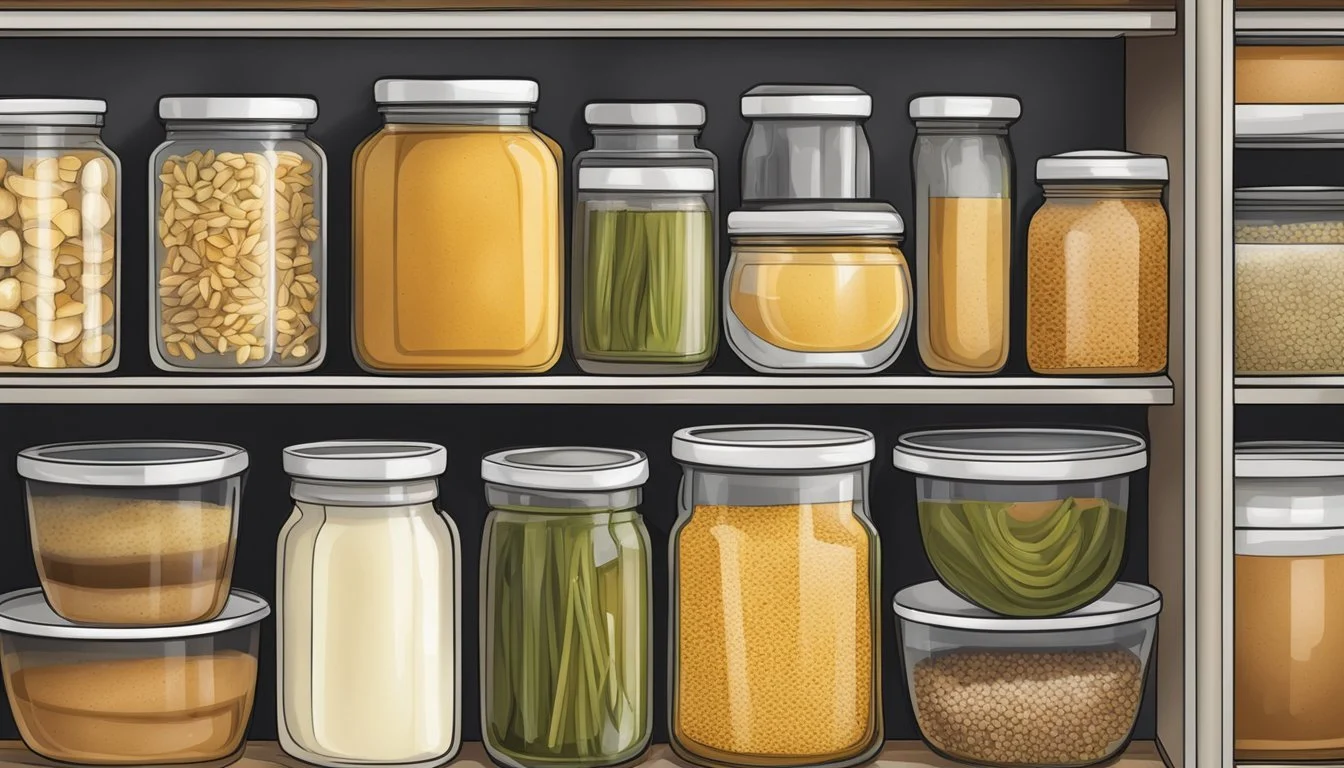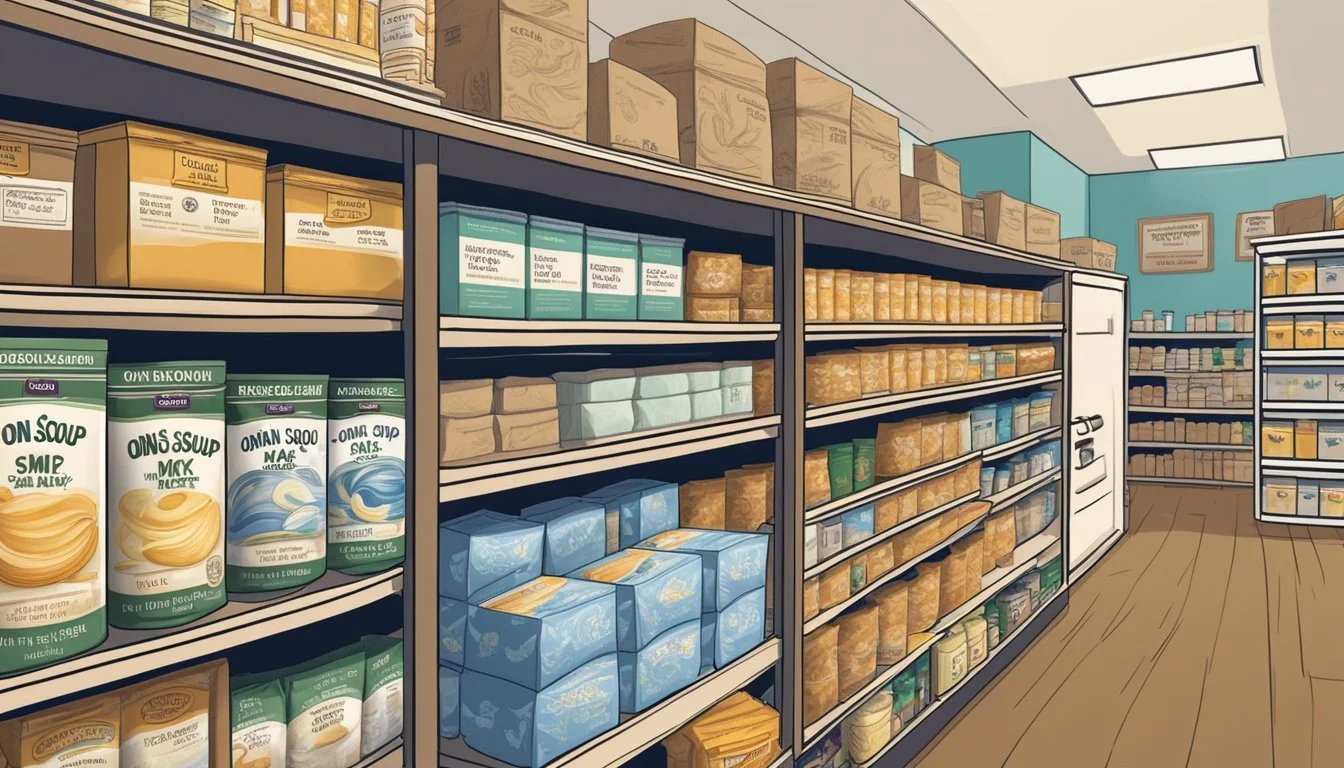Does Onion Soup Mix Expire?
Shelf Life and Storage Tips
Onion soup mix, a stalwart in many kitchens, is a convenient way to add flavor to various dishes. While it does have an expiration date, this does not mean the mix becomes unsafe to consume. Instead, the expiration date reflects when the product is likely to be at its peak flavor and potency.
Properly stored, onion soup mix can last well beyond its printed expiration date. The main ingredients, such as dehydrated onions, salt, and various seasonings, benefit from being kept in a cool, dry place. Over time, the potency of these ingredients may diminish, impacting the overall taste of the mix.
For those concerned with food safety, it's reassuring to know that the dry nature of the soup mix inhibits bacterial growth, making it safe to use even past its expiration date. However, for the best culinary results, it's advisable to use the mix within the recommended timeframe to ensure optimal flavor and quality.
Understanding Onion Soup Mix
Onion soup mix is a versatile seasoning blend often used to enhance various dishes. It typically includes a combination of dehydrated onions, spices, and other ingredients that contribute to its unique flavor.
Composition and Ingredients
Onion soup mix primarily consists of dehydrated onions as the main ingredient. Other common elements include salt, sugar, and cornstarch, which act as preservatives and thickeners. Various spices like parsley, black pepper, and turmeric are added to enhance flavor. Some mixes may also contain monosodium glutamate (MSG) for umami taste and caramel color for visual appeal.
The blend aims to provide a rich and savory taste, making it a convenient option for quick meal preparation.
Common Uses in Cooking
Onion soup mix is widely used in various recipes for its ability to add depth and flavor to dishes. It is often mixed into soups and stews to develop a robust taste. In meatloaf, it serves as a seasoning that enhances the meat's flavor and moisture.
Additionally, it can be used as a rub for roasts or mixed with sour cream to create a quick and tasty dip. Even in vegetable dishes, it can bring out nuanced flavors that make the meal more appealing.
Shelf Life and Expiration
The shelf life of onion soup mix depends on several factors, including storage conditions and packaging. Consumers should understand the differences between date labels to ensure they make informed decisions about product quality and safety.
Manufacturer's Estimates
Manufacturers provide shelf life estimates to help consumers understand how long a product maintains its best quality. Unopened onion soup mix generally has a shelf life of 1-2 years if stored in a cool, dry place.
After opening, the mix should be used within 6-12 months for optimal flavor and quality. Proper packaging, such as airtight containers, can help extend the shelf life post-opening.
Best By vs. Expiration Dates
It's crucial to distinguish between "Best By" dates and "Expiration" dates. A "Best By" date indicates when the product is at its peak quality, but it does not mean the product is unsafe to consume after this date.
"Expiration Dates," on the other hand, are safety-related, signaling when the product should no longer be consumed. For onion soup mix, the "best by" date is a guideline for taste and quality rather than safety. If stored properly, the mix might still be safe to eat past the printed date.
Storage Recommendations
Proper storage is essential to maintain the flavor and quality of onion soup mix over time. Ensuring it is kept in the right conditions and containers can significantly prolong its shelf life.
Ideal Conditions for Preservation
For optimal preservation, store onion soup mix in a cool, dry place. Temperatures should be consistent, ideally below 70°F (21°C), to prevent deterioration.
Avoid storing in areas prone to humidity or temperature fluctuations, such as near stoves or in bathrooms. These conditions help prevent clumping and the loss of potency in the seasonings.
Packaging and Containers
Using the right packaging is crucial. An airtight container is recommended, which helps limit exposure to air and moisture. Mason jars with tight seals are an excellent option.
Another suitable choice is freezer bags with proper sealing to protect from moisture. Store opened packs in their original packaging, tightly resealed, or transfer them to an airtight container to maintain freshness.
Signs of Spoilage
Recognizing spoilage in onion soup mix involves looking for specific visual, textural, and olfactory changes. These signs indicate that the mix may no longer be suitable for use, affecting both safety and quality.
Visual and Textural Changes
Visual signs of spoilage in onion soup mix may include discoloration. Typically, the mix should retain a consistent color; if it appears darker or shows any unusual spots, it could be compromised. Packaging tears or holes can also be a warning of spoilage.
Texturally, the mix should remain dry and free-flowing. Clumping is a common sign of moisture exposure, which can lead to spoilage. Noticeable changes in texture suggest the mix has been affected by moisture or contamination and may not perform as expected in recipes.
Odor and Flavor Alterations
An off odor is one of the most evident indicators of spoilage. Fresh onion soup mix should have a distinct, savory aroma. A stale or musty smell suggests that the mix has lost its potency or has gone bad.
Flavor alterations also signal spoilage. If the mix yields a bland or unusual taste when used, it is likely past its prime. These sensory changes can affect the dish's overall flavor, making the mix unsuitable for culinary use.
Proper storage, such as keeping the mix in a cool, dry place, can mitigate these spoilage risks. Regularly checking for these signs helps ensure the mix remains optimal for use.
Safety and Quality
When it comes to onion soup mix, both safety and quality are essential to consider. While expired dry soup mixes are generally safe to consume, the quality may be compromised over time.
Consuming Expired Mixes
Expired onion soup mix typically remains safe to eat due to its dry nature, which prevents bacterial growth. The primary ingredients, such as dehydrated onions and various seasonings, do not spoil easily. However, prolonged exposure to air and moisture can lead to diminished quality.
Loss of flavor and potency are common in expired mixes. These changes do not pose health risks but can affect the cooking experience. It is crucial to store the mix in a cool, dry place to maintain safety.
Maintaining Peak Quality Over Time
To ensure onion soup mix retains its best quality, proper storage is key. Air-tight containers help prevent moisture from compromising the product. Storing in a cool, dry area extends shelf life.
Opened packages should be tightly sealed to lock in freshness. Typically, the mix retains peak quality for 18-24 months. Regularly checking for clumping, discoloration, or changes in smell can help identify degradation. Employing these practices ensures that even expired mixes can be used effectively without significant quality loss.
Optimizing Shelf Life
Proper storage can significantly extend the shelf life of onion soup mix by protecting it from moisture, pests, and other elements that can degrade its quality.
Preventing Moisture and Pests
Storing onion soup mix in a dry, cool environment is vital to maintain its quality. Moisture is a key factor that can cause clumping and spoilage. An airtight container is ideal to keep the mix dry. Desiccant packets can also be used to absorb any moisture that might get trapped inside the container.
Pests are another concern, as they can infiltrate and contaminate food products. Ensuring the storage area is clean and free of potential pests helps. It's also advisable to keep the mix away from direct sunlight and areas with fluctuating temperatures, which can affect the integrity of the packaging and the product inside.
Proper Freezing Techniques
Freezing can be a good method to extend the shelf life of onion soup mix beyond its typical span. To freeze the mix effectively, it should be placed in a freezer-safe, airtight container. This prevents freezer burn, which can compromise both the texture and flavor of the mix. Label the container with the date of freezing to keep track of its age.
Before freezing, it’s important to ensure the mix is dry. Any residual moisture can cause ice crystals to form, which affects the quality of the mix when thawed. By following these storage strategies, the onion soup mix can maintain its quality for a longer period, ensuring it remains flavorful and safe to use.
Nutritional Considerations
When examining the nutritional profile of onion soup mix, particularly its sodium content and the benefits offered by its ingredients, several aspects are noteworthy. Ingredients like dehydrated vegetables and seasonings contribute both positively and negatively to dietary health.
Sodium Content and Health
Onion soup mix often contains high levels of sodium, which can have important health implications. Sodium is essential for maintaining fluid balance and nerve function, but excessive intake is linked to hypertension and cardiovascular diseases.
A typical packet of onion soup mix may contain up to 1000 mg of sodium per serving. This is significant given the daily recommended limit for sodium is about 2300 mg. Consumers should be mindful of this, especially if they have pre-existing health conditions such as high blood pressure.
A useful strategy could be to use only a portion of the packet or to look for low-sodium alternatives. Checking the nutrition label for sodium content is crucial for making informed choices.
Benefits of Soup Ingredients
Onion soup mix contains beneficial components like dehydrated vegetables, which retain much of their nutritional value. Dehydrated onions provide essential vitamins such as Vitamin C and B vitamins. They also offer dietary fiber, important for digestive health.
Additional ingredients like parsley may contribute unique nutrients like Vitamin K and antioxidants. Some mixes may include grains and legumes, enhancing the soup's protein and fiber content, essential for a balanced diet.
Consumers can further boost the nutritional value by adding fresh vegetables, legumes, or grains to the soup. This not only improves flavor but also enhances the overall nutrient profile, making the dish healthier and more filling.
Culinary Applications
Onion soup mix is a versatile ingredient utilized in various dishes, providing a robust flavor component. This section explores alternative ways to enhance recipes and the benefits of creating homemade mixes.
Alternative Recipe Enhancements
Using onion soup mix as a seasoning can elevate dishes such as chicken noodle soup, pasta bakes, and casseroles. The mix's savory blend of dehydrated onions, salt, and herbs infuses depth into recipes.
In slow cooker meals, it serves as an easy flavor boost. Adding it to a pot roast with water, vegetables, and garlic results in tender, flavorful meat. For a vegan option, adding this mix to lentil or chickpea stews can enhance natural flavors.
Experimentation with different recipes reveals its adaptability, from hearty soups to quick dips.
Creating Homemade Mixes
Homemade onion soup mixes offer control over ingredients and flavor potency. By combining dehydrated onions, salt, herbs, and seasonings like garlic and pepper, one can craft a mix tailored to taste preferences.
A basic recipe might include:
3 tablespoons dehydrated onions
2 teaspoons salt
1 teaspoon garlic powder
½ teaspoon pepper
1 teaspoon parsley
Adjusting the proportions allows for a customized blend.
This homemade approach suits those seeking natural flavors without preservatives, appealing to health-conscious cooks and those with dietary restrictions. It also permits the addition of unique ingredients to create signature mixes.
Brand-Specific Information
Commercially packaged onion soup mixes differ by brand in terms of ingredients, flavor profiles, and shelf life. Recognizing how various producers formulate their mixes and what popular brands offer can help consumers make informed choices.
Variations Across Producers
Brands produce onion soup mixes with different combinations of dehydrated onions, seasoning, salt, and sometimes MSG or natural flavors. The inclusion of these elements can vary based on the company's target consumers and pricing strategy.
Some brands might opt for a more natural product, avoiding artificial flavors and MSG.
Example:
A high-end brand might emphasize organic or non-GMO ingredients, which may appeal to health-conscious buyers. In contrast, budget-oriented brands might focus on affordability, possibly using synthetic additives to cut costs.
Popular Brands and Offerings
Lipton:
One of the most well-known brands, Lipton offers a widely recognized onion soup mix. It's favored for its versatility in recipes beyond just soup, such as dips and casseroles. Typically, it includes MSG and natural flavors to enhance taste.
Knorr:
Known for a variety of seasoning products, Knorr's onion soup mix often highlights its rich flavor and use of high-quality dehydrated onions. Knorr might also offer specific blends like French Onion, which could have distinct herbs and spices.
Campbell's:
A staple in many households, Campbell's onion soup mix is known for its robust taste. This brand often markets its product for its long shelf life and consistency in flavor, which is a significant factor for consumers.
Each brand targets different aspects—quality ingredients, affordability, or versatility—catering to varying consumer preferences.









